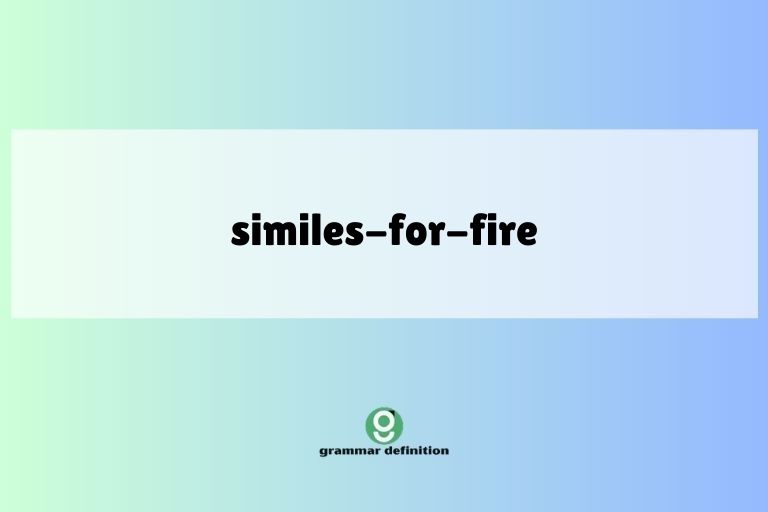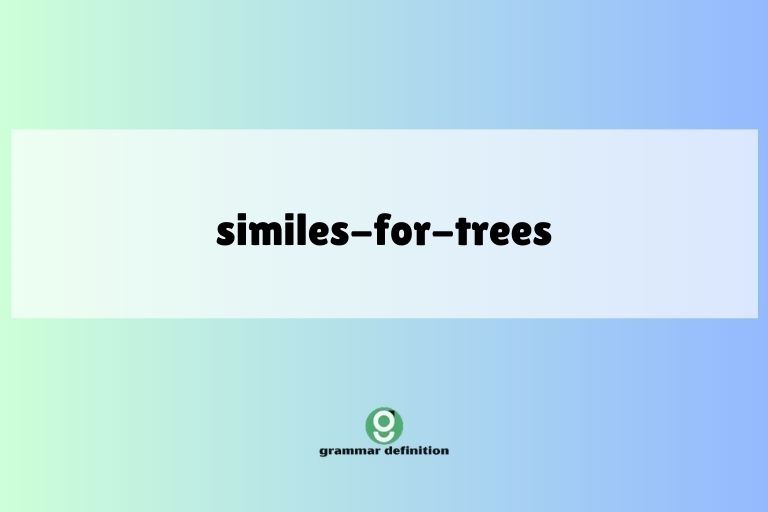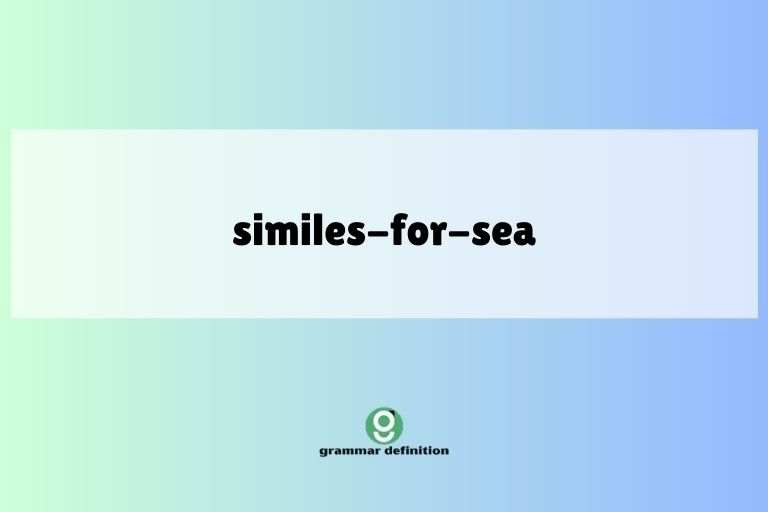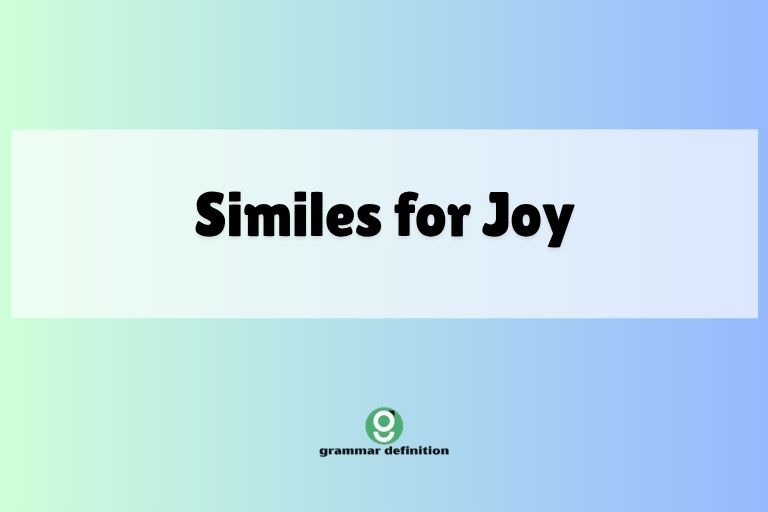Similes for Silence: Mastering Figurative Language
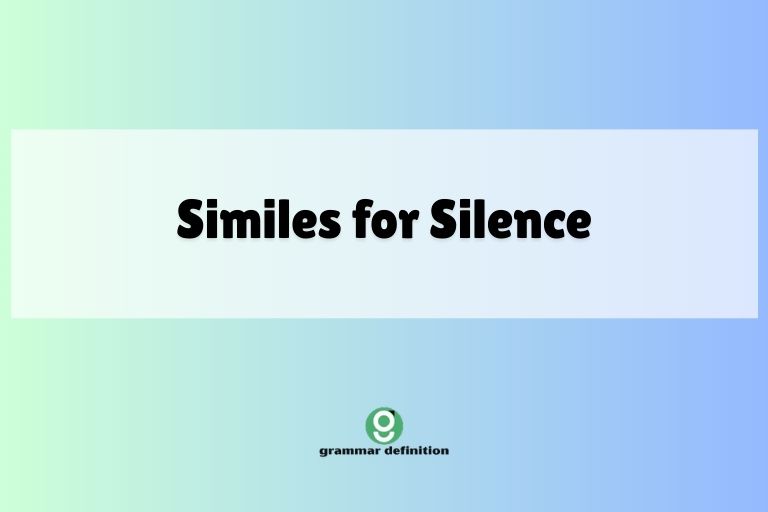
Silence, often perceived as the absence of sound, is a powerful concept that can convey a multitude of meanings. To effectively capture its essence, writers and speakers frequently employ similes, a type of figurative language that compares silence to something else using “like” or “as.” Understanding how to craft and interpret similes for silence enhances our ability to express nuanced ideas and evoke vivid imagery.
This article delves into the intricacies of similes for silence, exploring their structure, variations, and usage, providing a comprehensive guide for English language learners and enthusiasts alike. Whether you’re a student, a writer, or simply someone looking to improve your communication skills, this exploration of similes for silence will equip you with the tools to articulate the sound of quietude with greater precision and artistry.
Table of Contents
- Introduction
- Definition of Similes for Silence
- Structural Breakdown of Similes
- Types of Similes for Silence
- Examples of Similes for Silence
- Usage Rules for Similes
- Common Mistakes in Using Similes
- Practice Exercises
- Advanced Topics: Nuances and Subtleties
- FAQ: Frequently Asked Questions
- Conclusion
Definition of Similes for Silence
A simile is a figure of speech that directly compares two different things using the words “like” or “as.” The purpose of a simile is to create a vivid image or convey a specific feeling by associating the unfamiliar with the familiar. When applied to silence, similes help us understand and describe the quality, depth, or impact of various forms of quiet.
They allow us to go beyond simply stating that something is silent and instead paint a picture of what that silence feels, looks, or sounds like.
Similes for silence can be classified based on what aspect of silence they emphasize: its completeness, its oppressiveness, its peacefulness, or its potential to be broken. They function to add depth and texture to descriptions, making them more engaging and memorable.
In literature, similes for silence can heighten tension, create atmosphere, or reveal a character’s inner state. In everyday conversation, they can add color and expressiveness to our speech.
Classification of Similes for Silence
Similes for silence can be classified based on the aspect of silence they emphasize:
- Descriptive Similes: Describe the quality or characteristic of silence.
- Emotional Similes: Evoke the feeling or emotion associated with silence.
- Situational Similes: Relate silence to a specific situation or context.
Function of Similes for Silence
The primary functions of similes for silence include:
- Enhancing Description: Providing a more vivid and detailed depiction of silence.
- Evoking Emotion: Creating a specific mood or feeling related to silence.
- Adding Emphasis: Highlighting the significance or impact of silence.
Contexts of Similes for Silence
Similes for silence are used in various contexts, including:
- Literature: To create atmosphere, develop characters, and enhance themes.
- Poetry: To evoke imagery and convey emotions related to silence.
- Everyday Speech: To add expressiveness and color to descriptions.
Structural Breakdown of Similes
A simile consists of three main components: the subject (the thing being described), the linking word (“like” or “as”), and the object of comparison (the thing the subject is being compared to). In the context of similes for silence, the subject is always some form of silence, and the object of comparison is something that shares a quality with that silence.
Understanding this structure allows us to deconstruct and create effective similes.
The basic pattern is: Silence + Like/As + Object of Comparison. For example, “The silence was like a heavy blanket” follows this pattern. The effectiveness of a simile depends on the strength and relevance of the comparison. The more apt and evocative the comparison, the more impactful the simile will be.
Let’s break down the example “The silence was like a heavy blanket” further:
- Subject: The silence
- Linking Word: Like
- Object of Comparison: A heavy blanket
This simile suggests that the silence was oppressive and stifling, similar to the feeling of being weighed down by a heavy blanket.
Patterns of Similes
Similes often follow specific patterns to enhance their effectiveness:
- Direct Comparison: Directly states the similarity between silence and the object of comparison.
- Implied Comparison: Suggests the similarity through descriptive language.
Rules of Similes
The rules for constructing similes are relatively flexible, but here are some guidelines:
- Use “like” or “as” to explicitly make the comparison.
- Ensure the comparison is logical and relevant.
- Avoid clichés and strive for originality.
Types of Similes for Silence
Similes for silence can be categorized based on the specific qualities of silence they are intended to highlight. These categories include similes that emphasize the completeness or depth of silence, those that focus on its unsettling or oppressive nature, and those that portray silence as peaceful or restorative.
Recognizing these different types can help you choose the most appropriate simile for a given context.
Similes for Complete Silence
These similes emphasize the absolute absence of sound, often comparing silence to things that are inherently still or devoid of noise. They aim to convey a sense of profound quietude, where even the faintest sounds are absent.
For example, “The silence was like the vacuum of space” suggests an utter lack of sound, similar to the emptiness of outer space.
Similes for Oppressive Silence
These similes highlight the unsettling or suffocating nature of silence, often comparing it to things that are heavy, dense, or claustrophobic. They aim to create a sense of unease or tension, suggesting that the silence is not peaceful but rather a burden.
For example, “The silence was as heavy as a tombstone” conveys a feeling of weight and foreboding.
Similes for Peaceful Silence
These similes portray silence as a calming and restorative force, often comparing it to things that are gentle, serene, or natural. They aim to evoke a sense of tranquility and relaxation, suggesting that the silence is a welcome respite from the noise and chaos of the world.
For example, “The silence was like a soft blanket of snow” suggests a gentle and comforting quiet.
Similes for Anticipatory Silence
These similes create a sense of tension and expectation, often comparing silence to the moments before a significant event. They aim to evoke a feeling of suspense and anticipation, suggesting that the silence is pregnant with possibility.
For example, “The silence was like the hush before a storm” creates a sense of impending drama.
Examples of Similes for Silence
The following tables provide extensive examples of similes for silence, categorized by the type of silence they describe. Each example aims to illustrate the specific qualities and nuances of silence, offering a wide range of options for expressing different aspects of quietude.
The following table provides examples of similes for complete silence. These comparisons emphasize the total absence of sound, creating a sense of profound quietude.
Similes for Complete Silence
| Simile | Explanation |
|---|---|
| The silence was like the vacuum of space. | Implies an absolute absence of sound, similar to the emptiness of outer space. |
| The silence was as deep as the ocean floor. | Suggests a profound and impenetrable quiet, like the depths of the ocean. |
| The silence was like a tomb. | Conveys a sense of deathly quiet and stillness. |
| The silence was as complete as a dreamless sleep. | Implies a total lack of awareness or sound, like a deep, undisturbed sleep. |
| The silence was like a world without sound. | Suggests a complete absence of auditory input, as if the world were muted. |
| The silence was as absolute as a mathematical zero. | Emphasizes the complete lack of sound, similar to the concept of zero. |
| The silence descended like a curtain. | Silence falls suddenly and completely. |
| The room was as silent as a padded cell. | A room designed to contain sound, utterly quiet. |
| The forest was silent, like a forgotten place. | Nature’s quiet, suggesting abandonment and solitude. |
| Her response was as silent as the grave. | A refusal to speak, implying finality and seriousness. |
| The night was as silent as a held breath. | A tense, anticipatory quiet. |
| The snow fell in silence, like a secret. | Quiet and secretive. |
| The library was as silent as a monastery. | A place of study and contemplation. |
| The old house stood in silence, like a ghost. | Quiet and haunted. |
| The museum was as silent as history itself. | Quiet and filled with the weight of the past. |
| The valley was as silent as a painting. | Still, serene, and picturesque. |
| The village was as silent as if everyone had vanished. | Eerily quiet, suggesting something is amiss. |
| The church was as silent as prayer. | Reverent and contemplative. |
| The desert was as silent as the sky was vast. | An expansive, empty quiet. |
| The world was as silent as if time had stopped. | An unnerving stillness. |
| The forest was as silent as a dream. | Ethereal and unreal. |
| The old theater was as silent as the stars. | Quiet and grand. |
| The countryside was as silent as a sleeping animal. | Peaceful and still. |
| The garden was as silent as a meditation. | Calming and serene. |
| The crowd was as silent as a statue. | Still and unmoving. |
The following table provides examples of similes for oppressive silence. These comparisons highlight the unsettling or suffocating nature of silence, creating a sense of unease or tension.
Similes for Oppressive Silence
| Simile | Explanation |
|---|---|
| The silence was as heavy as a tombstone. | Conveys a feeling of weight and foreboding. |
| The silence hung in the air like a thick fog. | Suggests a dense and suffocating quiet. |
| The silence was like a physical pressure. | Implies a tangible sense of oppression. |
| The silence was as stifling as a closed room. | Conveys a feeling of confinement and lack of air. |
| The silence pressed down like a lead weight. | Suggests a heavy and burdensome quiet. |
| The silence was as uncomfortable as a tight collar. | Implies a sense of restriction and discomfort. |
| The silence was as thick as molasses. | Describes the silence as slow and heavy. |
| The silence was as palpable as fear. | Silence is so intense it can be felt. |
| The silence was as deafening as an explosion. | The lack of sound is overwhelming. |
| The silence was as suffocating as a nightmare. | Silence is frightening and inescapable. |
| The silence was as tense as a drawn bow. | Something is about to happen. |
| The silence was as deep as a well. | A profound and mysterious quiet. |
| The silence was as sharp as a knife. | The silence is cutting and uncomfortable. |
| The silence was as cold as ice. | An emotionless and chilling silence. |
| The silence was as hollow as a ghost town. | Empty and unsettling. |
| The silence was as impenetrable as a wall. | Impossible to break or ignore. |
| The silence was as ominous as a dark cloud. | Something bad is about to happen. |
| The silence was as still as a statue. | Unmoving and lifeless. |
| The silence was as weighty as a secret. | Filled with unspoken words. |
| The silence was as unnerving as a stare. | Makes you feel uncomfortable. |
| The silence was as thick as thieves. | Suggests conspiracy or shared guilt. |
| The silence was as binding as chains. | Restricting and inescapable. |
| The silence was as dark as night. | Oppressive and foreboding. |
| The silence was as final as death. | Cannot be undone. |
| The silence was as heavy as unspoken words. | Silence is meaningful and loaded. |
The following table provides examples of similes for peaceful silence. These comparisons portray silence as a calming and restorative force, creating a sense of tranquility and relaxation.
Similes for Peaceful Silence
| Simile | Explanation |
|---|---|
| The silence was like a soft blanket of snow. | Suggests a gentle and comforting quiet. |
| The silence was as soothing as a gentle breeze. | Conveys a sense of calm and relaxation. |
| The silence was like a warm embrace. | Implies a comforting and reassuring quiet. |
| The silence was as peaceful as a still lake. | Conveys a sense of serenity and tranquility. |
| The silence was like a quiet meditation. | Suggests a calm and reflective quiet. |
| The silence was as relaxing as a hot bath. | Implies a sense of comfort and ease. |
| The silence was as gentle as a whisper. | Describes the silence as soft and comforting. |
| The silence was as pure as the morning dew. | Silence is fresh and untouched. |
| The silence was as light as a feather. | Silence is delicate and effortless. |
| The silence was as sweet as a lullaby. | Silence is comforting and soothing. |
| The silence was as calm as a sleeping child. | Silence is peaceful and innocent. |
| The silence was as clear as a mountain stream. | Silence is pure and undisturbed. |
| The silence was as refreshing as rain. | Silence renews and revitalizes. |
| The silence was as tender as a mother’s touch. | Silence is caring and gentle. |
| The silence was as vast as the open sky. | Silence is expansive and free. |
| The silence was as welcome as a long rest. | Silence is needed and appreciated. |
| The silence was as quiet as a secret. | Silence is intimate and protected. |
| The silence was as deep as a dream. | Silence is mysterious and profound. |
| The silence was as healing as time. | Silence restores and repairs. |
| The silence was as soft as velvet. | Silence is smooth and luxurious. |
| The silence was as still as a photograph. | Silence captures a moment in time. |
| The silence was as warm as sunlight. | Silence is comforting and pleasant. |
| The silence was as natural as breathing. | Silence is essential and effortless. |
| The silence was as simple as truth. | Silence is honest and straightforward. |
| The silence was as fulfilling as love. | Silence is satisfying and complete. |
The following table provides examples of similes for anticipatory silence. These comparisons create a sense of tension and expectation, suggesting that the silence is pregnant with possibility.
Similes for Anticipatory Silence
| Simile | Explanation |
|---|---|
| The silence was like the hush before a storm. | Creates a sense of impending drama. |
| The silence was as tense as a coiled spring. | Suggests pent-up energy and anticipation. |
| The silence was like a held breath. | Conveys a sense of suspense and expectation. |
| The silence was as expectant as a waiting audience. | Implies a sense of anticipation and readiness. |
| The silence was like the calm before the battle. | Suggests an impending conflict or challenge. |
| The silence was as pregnant as a loaded gun. | Implies a sense of potential danger or excitement. |
| The silence was as electric as a charged wire. | Full of potential energy. |
| The silence was as still as a predator waiting. | A tense and watchful quiet. |
| The silence was as fragile as thin ice. | About to break. |
| The silence was as deep as a secret. | Something hidden and waiting to be revealed. |
| The silence was as heavy as unspoken questions. | Full of unresolved issues. |
| The silence was as taut as a violin string. | Ready to snap. |
| The silence was as thick as anticipation. | Filled with excitement and expectation. |
| The silence was as hushed as a courtroom before the verdict. | Awaiting a decision. |
| The silence was as breathless as a diver underwater. | Holding on, waiting for air. |
| The silence was as eerie as an empty stage. | Waiting for the performance to begin. |
| The silence was as focused as a sniper’s aim. | Concentrated and purposeful. |
| The silence was as intent as a scientist’s gaze. | Observing and analyzing. |
| The silence was as poised as a dancer before a leap. | Ready to move. |
| The silence was as ready as a starting gun. | About to begin. |
| The silence was as sharp as a pin about to drop. | Awaiting the slightest sound. |
| The silence was as still as a cat before it pounces. | Prepared to strike. |
| The silence was as expectant as Christmas Eve. | Waiting for a special event. |
| The silence was as full as a dam about to burst. | Ready to overflow. |
| The silence was as loaded as a question. | Waiting for an answer. |
Usage Rules for Similes
Using similes effectively requires an understanding of the rules that govern their construction and application. While similes offer creative freedom, adhering to certain guidelines ensures clarity, relevance, and impact.
These rules cover aspects such as avoiding clichés, ensuring logical comparisons, and maintaining consistency in tone and style.
Avoid Clichés: Strive for originality and avoid overused similes. Instead of saying “as quiet as a mouse,” try something more unique and evocative.
Ensure Logical Comparison: Make sure the comparison is logical and relevant. The object of comparison should share a clear quality with the silence you are describing.
Maintain Consistency: Maintain consistency in tone and style. The simile should fit the overall mood and style of your writing or speech.
Exceptions to the Rules
While the above rules are generally applicable, there are exceptions:
- Intentional Clichés: Using a cliché intentionally for comedic or ironic effect.
- Stylistic Choices: Deviating from the rules for artistic or stylistic purposes.
Special Cases in Simile Usage
Special cases in simile usage include:
- Extended Similes: Developing a simile over several sentences or paragraphs.
- Metaphorical Similes: Blurring the line between similes and metaphors for added depth.
Common Mistakes in Using Similes
Even experienced writers and speakers can make mistakes when using similes. Common errors include using clichés, making illogical comparisons, and mixing metaphors.
Recognizing these mistakes and understanding how to correct them is crucial for effective communication.
Using Clichés: Overusing familiar similes like “as quiet as a mouse” weakens the impact of your writing.
Illogical Comparisons: Comparing silence to something that doesn’t share a relevant quality can confuse or mislead the reader.
Mixing Metaphors: Combining unrelated metaphors can create a jarring and confusing effect.
Here’s a table of common mistakes:
| Incorrect | Correct | Explanation |
|---|---|---|
| The silence was as quiet as a mouse. | The silence was as deep as a well. | Avoid overused clichés; use more original comparisons. |
| The silence was like a colorful rainbow. | The silence was like a heavy blanket. | Ensure the comparison is logical and relevant. |
| The silence was a blanket of snow, but it screamed loudly. | The silence was like a soft blanket of snow. | Maintain consistency and avoid mixing metaphors. |
| The silence was like a rock, exploding with anticipation. | The silence was like a coiled spring, ready to snap. | Avoid contradictory imagery within the simile. |
| The silence was as flavorful as a silent movie. | The silence was as captivating as a silent movie. | Choose objects that logically relate to the quality of silence. |
| The silence was as loud as a whisper. | The silence was as soft as a whisper. | Avoid direct contradictions within the simile. |
| The silence tasted like the color blue. | The silence felt like a cold draft. | Ensure the sensory connection is logical and understandable. |
| The silence was like a book that had no pages. | The silence was like a room with no doors. | The comparison should be meaningful and evocative. |
| The silence was as verbose as a stone. | The silence was as impenetrable as a stone. | Use adjectives that align with the qualities of silence. |
| The silence was like a storm of quiet. | The silence was like the eye of the storm. | Ensure the imagery is coherent and consistent. |
Practice Exercises
These exercises will help you practice using similes for silence effectively. Each exercise focuses on a different aspect of simile construction and application, allowing you to hone your skills and deepen your understanding.
Exercise 1: Identifying Similes
Identify the similes in the following sentences:
| Question | Answer |
|---|---|
| 1. The silence was like a deep, dark well. | like a deep, dark well |
| 2. The silence hung in the air, heavy and thick. | (None, this is a metaphor) |
| 3. The silence was as cold as ice. | as cold as ice |
| 4. Silence is golden. | (None, this is a metaphor) |
| 5. The silence was like a gentle rain. | like a gentle rain |
| 6. The silence was as loud as a bomb about to explode. | as loud as a bomb about to explode |
| 7. The silence was deafening. | (None, this is a metaphor) |
| 8. The silence was like a secret. | like a secret |
| 9. The silence was as vast as space. | as vast as space |
| 10. The silence was a dark cloud. | (None, this is a metaphor) |
Exercise 2: Completing Similes
Complete the following similes with an appropriate comparison:
| Question | Answer |
|---|---|
| 1. The silence was like _____. | a forgotten dream |
| 2. The silence was as deep as _____. | the ocean floor |
| 3. The silence was as heavy as _____. | a locked door |
| 4. The silence was like _____. | a world without people |
| 5. The silence was as peaceful as _____. | a sleeping baby |
| 6. The silence was like _____. | a song unsung |
| 7. The silence was as tense as _____. | a loaded gun |
| 8. The silence was like _____. | a breath held under water |
| 9. The silence was as fragile as _____. | a house of cards |
| 10. The silence was like _____. | a clock without hands |
Exercise 3: Creating Similes
Create your own similes for silence based on the following prompts:
| Prompt | Example Answer |
|---|---|
| 1. Describe the silence in a library. | The silence in the library was like a sanctuary for the mind. |
| 2. Describe the silence after an argument. | The silence after the argument was as heavy as a stone. |
| 3. Describe the silence in a forest at night. | The silence in the forest at night was like a secret whispered among the trees. |
| 4. Describe the silence before a performance. | The silence before the performance was as tense as a coiled spring. |
| 5. Describe the silence in a hospital room. | The silence in the hospital room was like a held breath, full of anticipation and worry. |
| 6. Describe the silence in a haunted house. | The silence in the haunted house was as eerie as a ghost’s whisper. |
| 7. Describe the silence of the desert. | The silence of the desert was as vast as the endless dunes. |
| 8. Describe the silence in a church. | The silence in the church was like a prayer, reverent and profound. |
| 9. Describe the silence in a crowded room when bad news arrives. | The silence in the crowded room was as sudden as a snapped string. |
| 10. Describe the silence of space. | The silence of space was like an endless, soundless void. |
Advanced Topics: Nuances and Subtleties
Beyond the basic understanding of similes for silence lies a realm of nuances and subtleties that can elevate your writing and communication to a new level. This includes exploring the use of extended similes, metaphorical similes, and the interplay between similes and other figures of speech.
Mastering these advanced topics allows for a richer and more expressive use of language.
Extended Similes: Developing a simile over several sentences or paragraphs to create a more detailed and immersive comparison.
Metaphorical Similes: Blurring the line between similes and metaphors to add depth and complexity to your descriptions.
Interplay with Other Figures of Speech: Combining similes with other figures of speech, such as personification or hyperbole, to create a more layered and impactful effect.
Subtleties of Silence
- Intentional ambiguity: Using similes that can be interpreted in multiple ways to create layers of meaning.
- Cultural context: Understanding how cultural background influences the perception and interpretation of silence.
FAQ: Frequently Asked Questions
Here are some frequently asked questions about similes for silence, along with detailed answers to help clarify any confusion.
- What is the difference between a simile and a metaphor?
A simile explicitly compares two things using “like” or “as,” while a metaphor implicitly compares them without using these words. For example, “The silence was like a tomb” is a simile, while “The silence was a tomb” is a metaphor. Similes are generally considered less direct and forceful than metaphors.
- How can I avoid using clichés in my similes?
To avoid clichés, strive for originality and think beyond the obvious. Consider the specific qualities of the silence you are describing and look for unique and unexpected comparisons. Brainstorm a list of potential objects of comparison and choose the one that is most evocative and relevant.
- Can a simile be too complex or obscure?
Yes, a simile can be too complex or obscure if the comparison is too abstract or unfamiliar to the reader. The goal of a simile is to clarify and enhance understanding, so it’s important to choose objects of comparison that are accessible and relatable. If a simile requires too much explanation, it may be less effective.
- How do I choose the right simile for a particular context?
Consider the overall tone and mood of your writing or speech, as well as the specific qualities of the silence you are describing. Choose a simile that aligns with these elements and effectively conveys the intended meaning. Experiment with different options and see which one resonates most strongly.
- Are there any cultural differences in the interpretation of similes for silence?
Yes, cultural background can influence the perception and interpretation of silence. What is considered peaceful silence in one culture may be interpreted as oppressive silence in another. Be mindful of these cultural differences and choose similes that are appropriate for your intended audience.
- Can I combine multiple similes in a single sentence or paragraph?
While it is possible to combine multiple similes, it’s important to do so carefully to avoid creating a confusing or cluttered effect. Use multiple similes sparingly and ensure that they are logically connected and contribute to the overall meaning.
- What are some common themes or objects used in similes for
silence?
Common themes and objects used in similes for silence include nature (e.g., snow, the ocean, the desert), inanimate objects (e.g., tombs, blankets, walls), and abstract concepts (e.g., dreams, secrets, prayers). These themes and objects often evoke specific qualities or emotions associated with silence.
- How do similes for silence enhance descriptive writing?
Similes for silence provide a more vivid and detailed depiction of quietude, allowing writers to go beyond simply stating that something is silent. By comparing silence to something else, similes create a sensory experience for the reader, enhancing their understanding and appreciation of the described scene or situation.
- Can similes for silence be used in persuasive writing?
Yes, similes for silence can be used in persuasive writing to evoke emotions and create a specific mood. By carefully choosing similes that align with the intended message, writers can influence the reader’s perception of silence and persuade them to adopt a particular viewpoint.
- How can I improve my ability to create effective similes for silence?
To improve your ability to create effective similes for silence, practice regularly, read widely, and pay attention to the way other writers use figurative language. Experiment with different comparisons and seek feedback from others. The more you practice, the more skilled you will become at crafting impactful and evocative similes.
Conclusion
Similes for silence are powerful tools for enhancing descriptive writing, evoking emotions, and conveying nuanced ideas. By understanding the structure, types, and usage rules of similes, you can effectively articulate the sound of quietude with greater precision and artistry.
Whether you’re a writer, a speaker, or simply someone looking to improve your communication skills, mastering similes for silence will enable you to express the complexities of quietude in a more engaging and memorable way. Embrace the art of comparison and explore the boundless possibilities of figurative language to bring your words to life.

